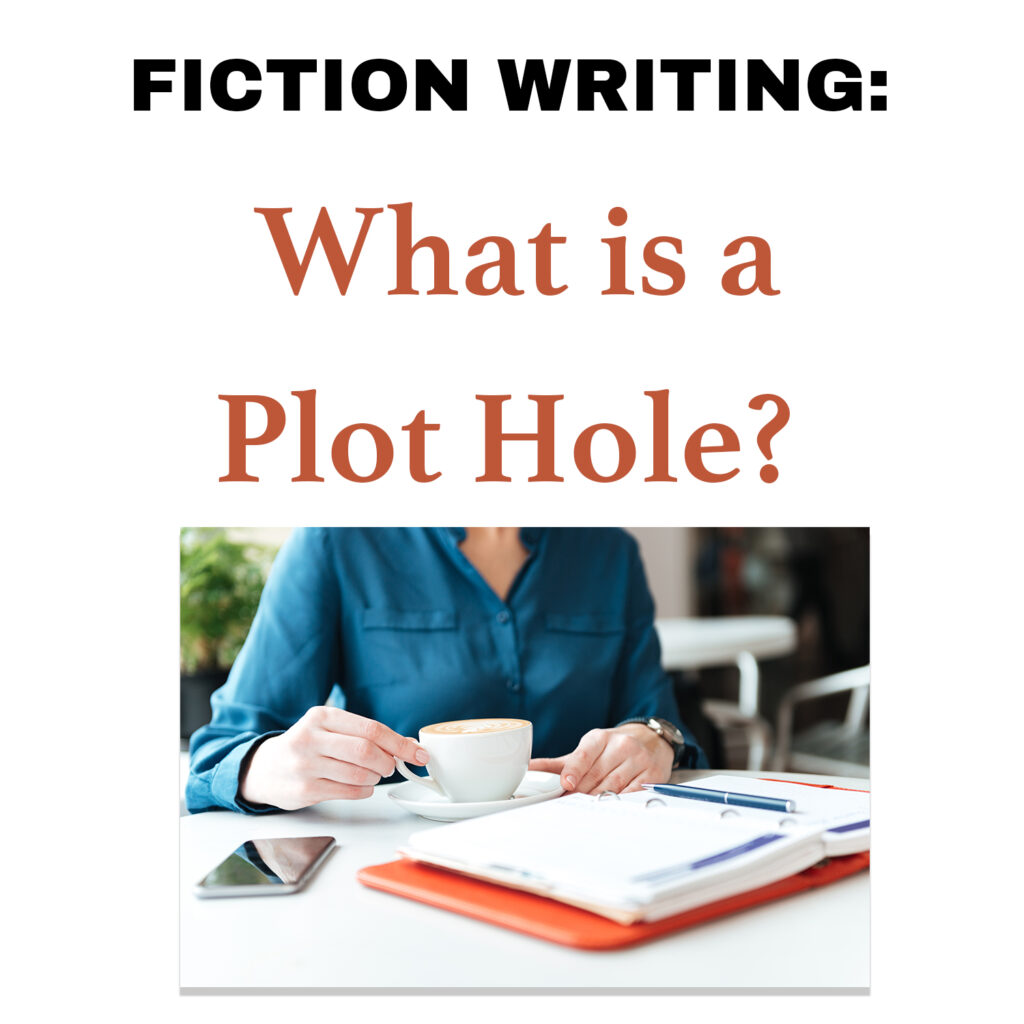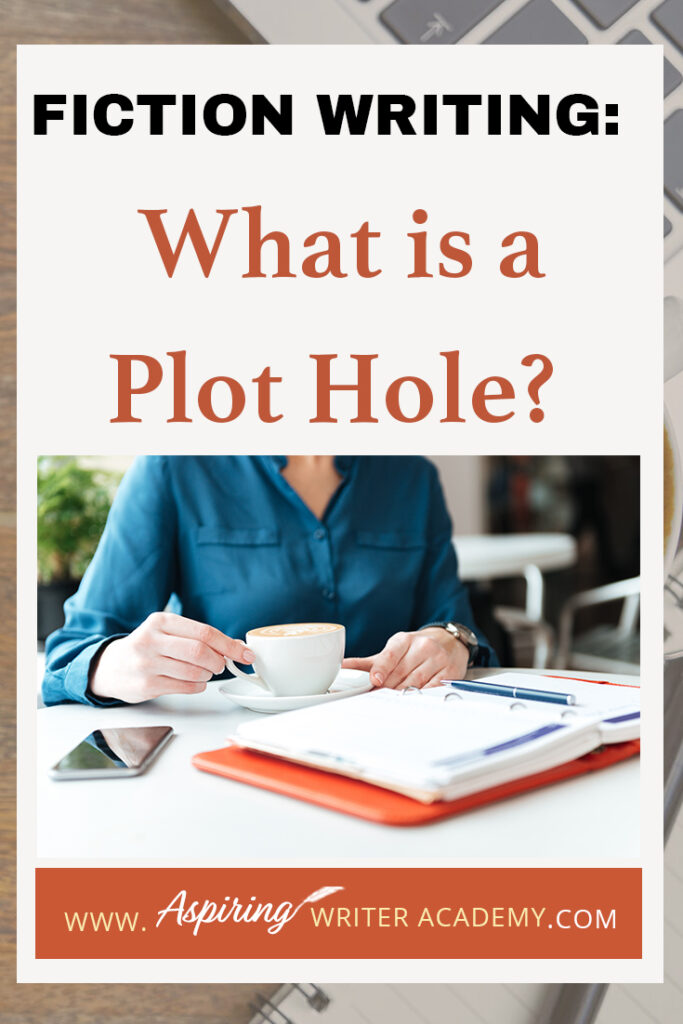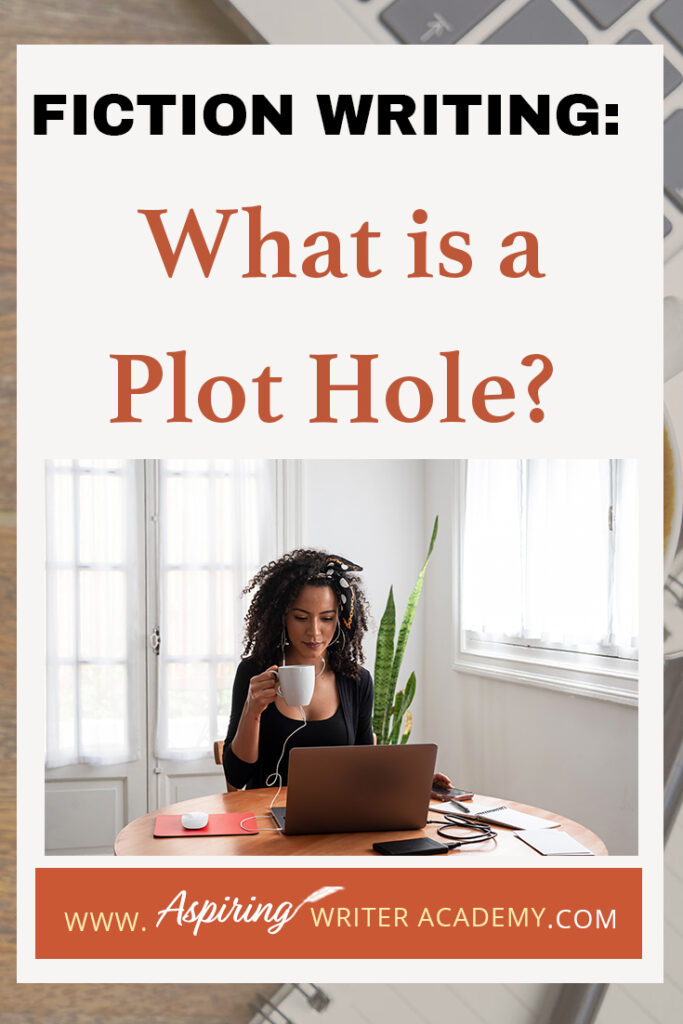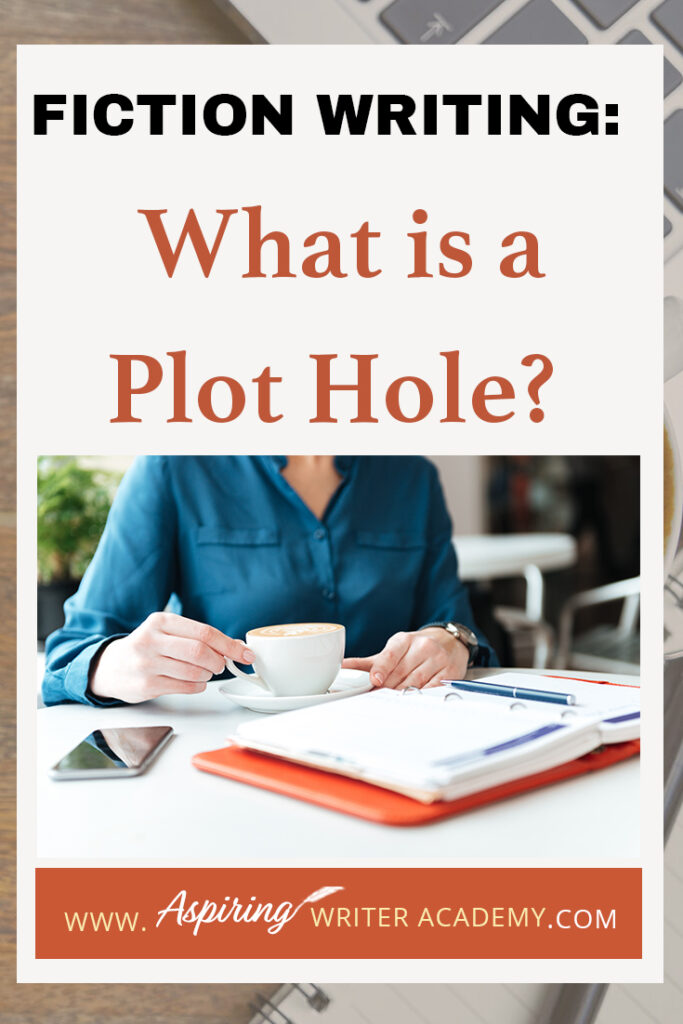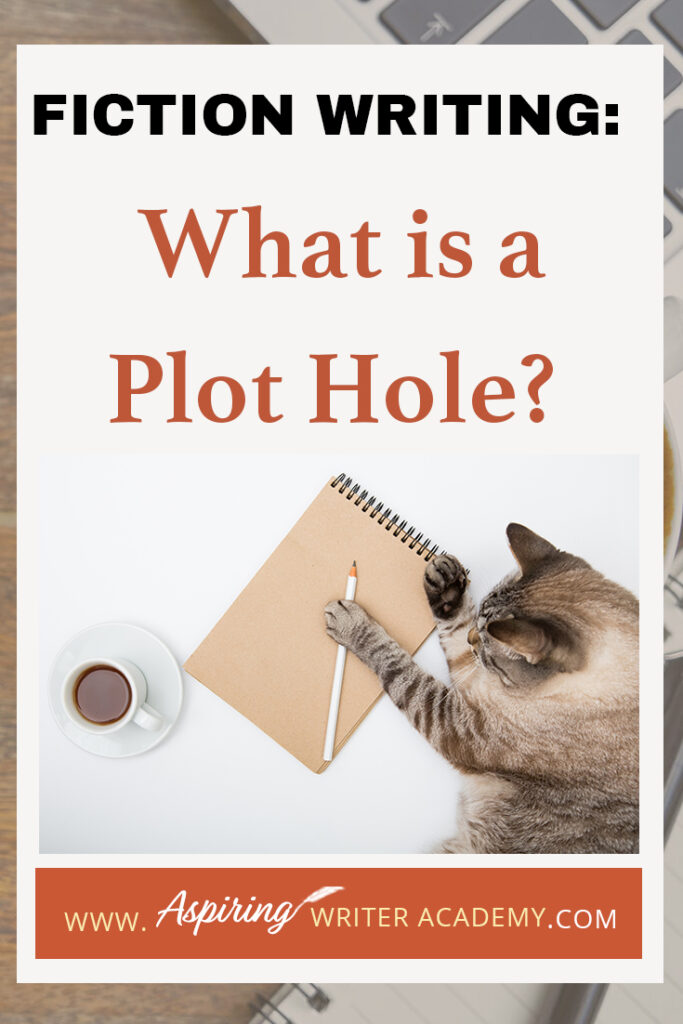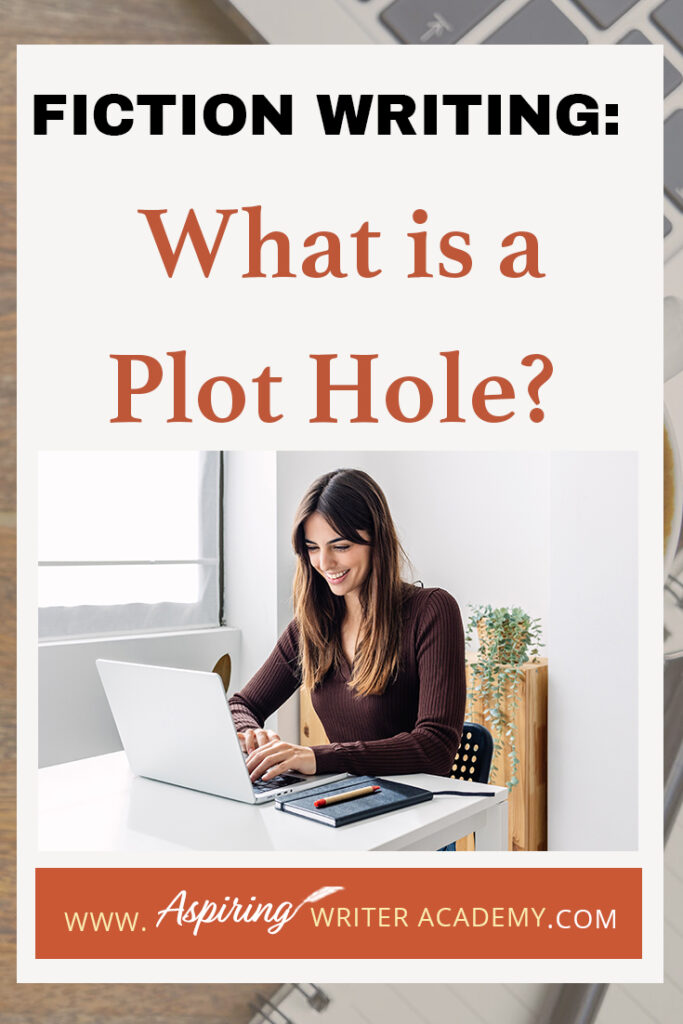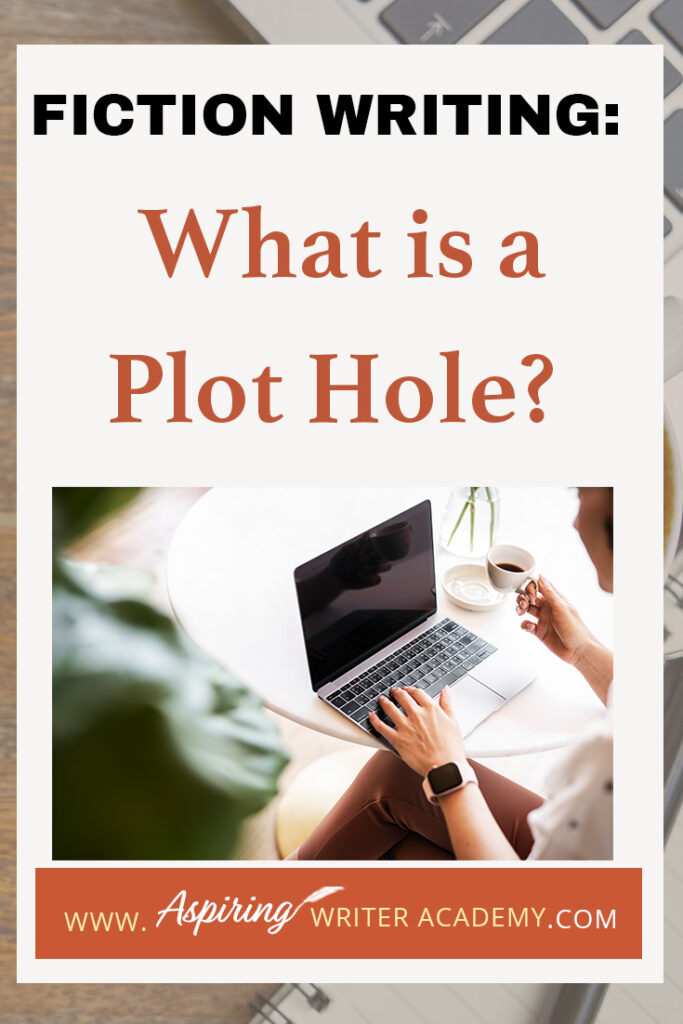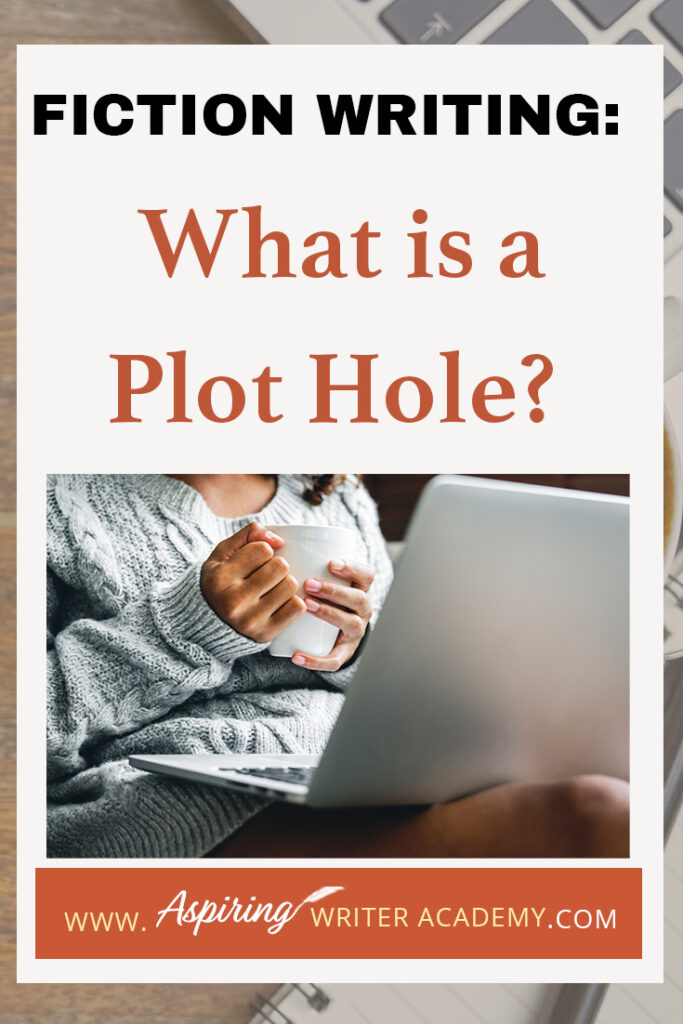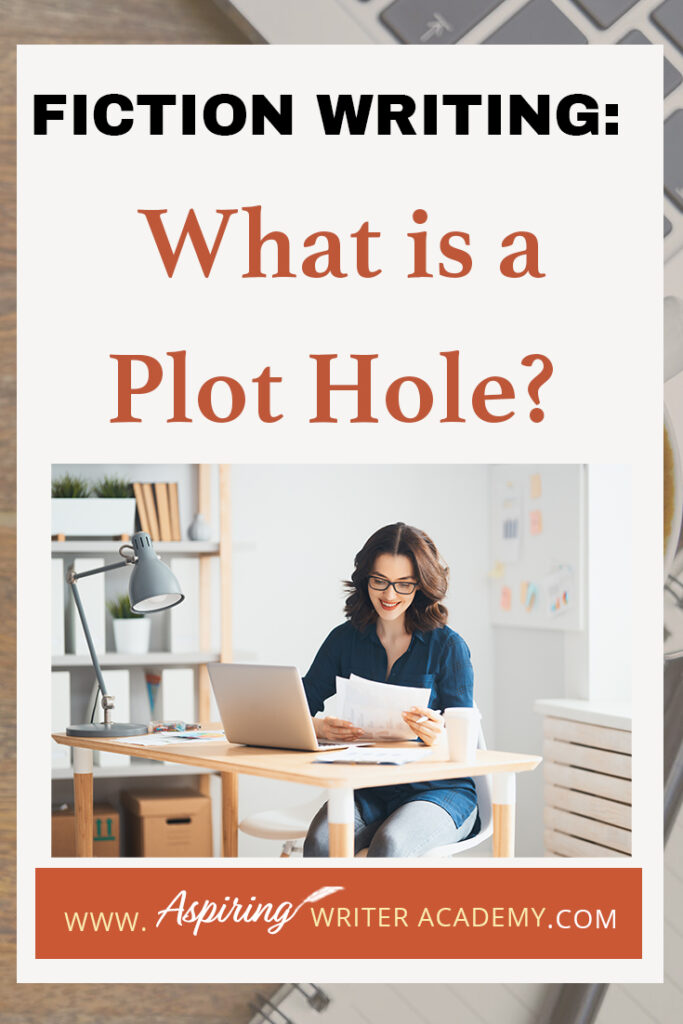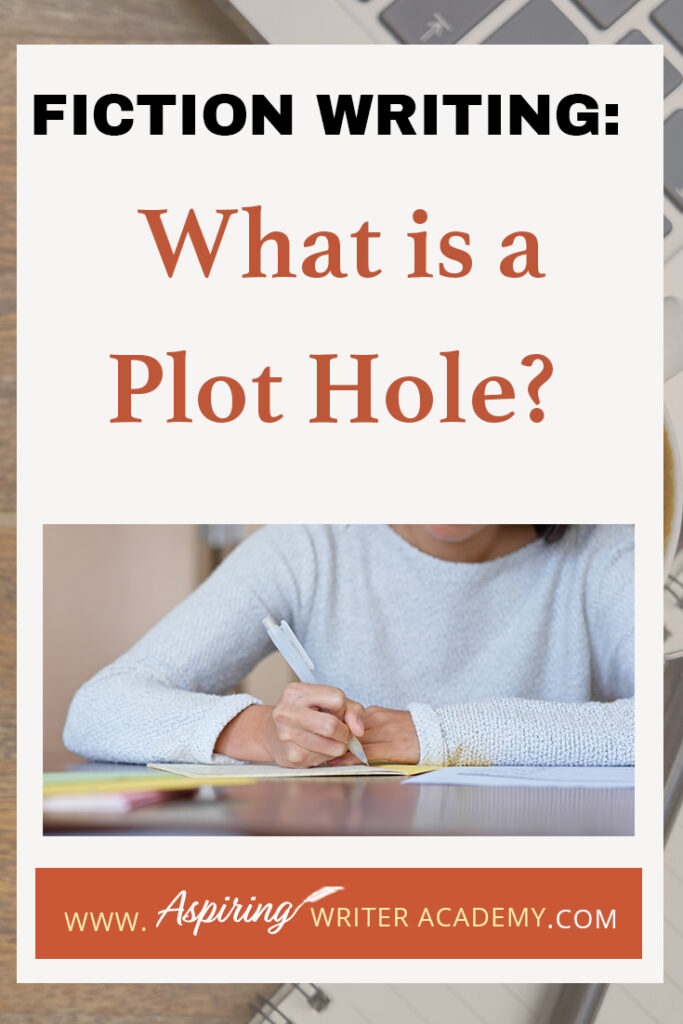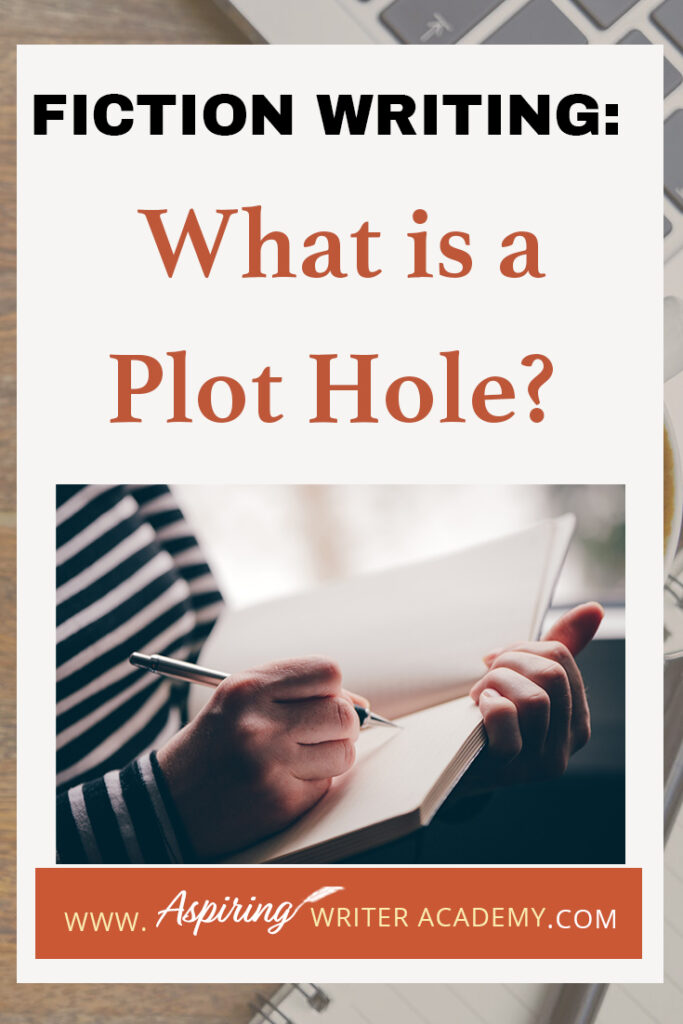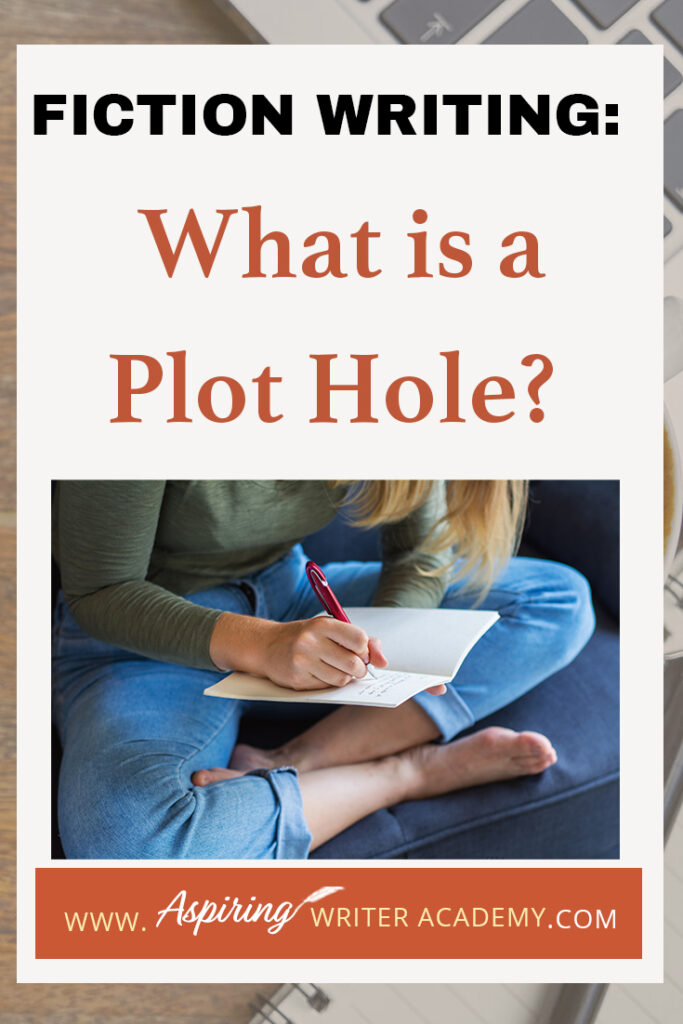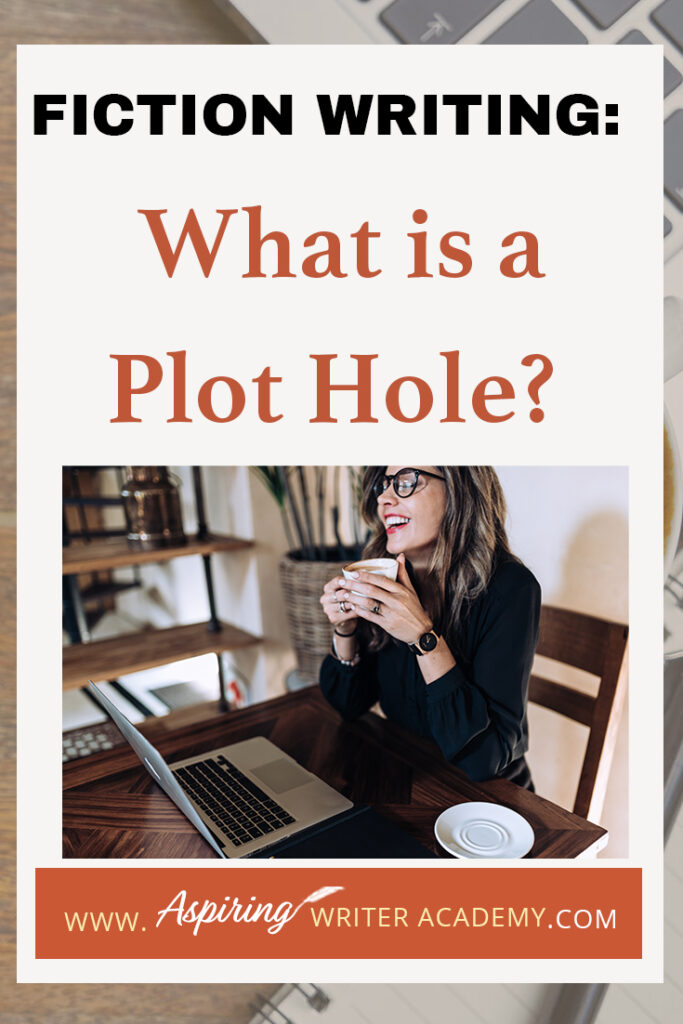Fiction Writing: What is a Plot Hole?
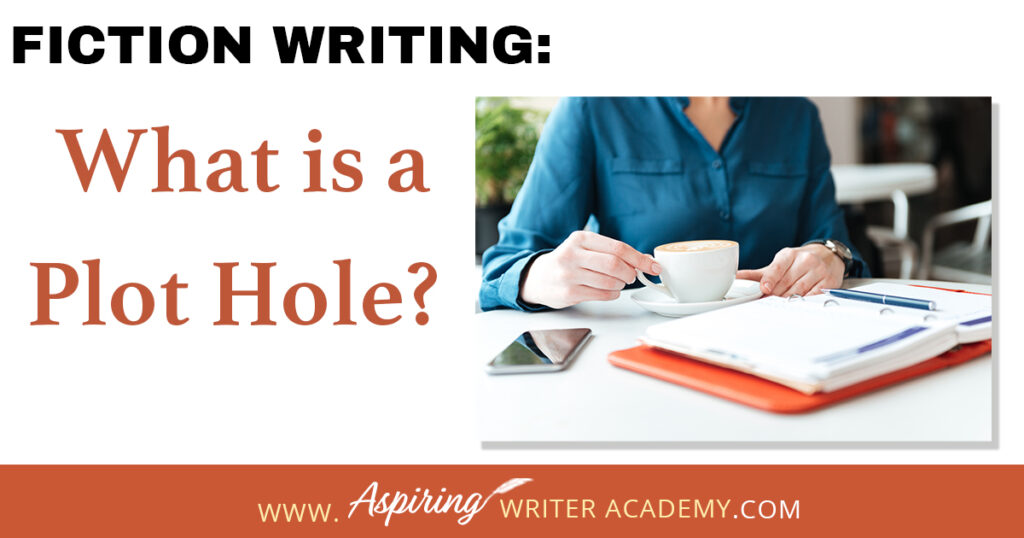
As its name suggests, a plot hole is a missing piece of your novel that trips up your reader. The story is progressing smoothly and then all the sudden something just doesn’t make sense. This breaks trust with your reader, who now finds the story unbelievable.
How do you know if your story has holes in the plot? In Fiction Writing: What is a Plot Hole? we discuss the various kinds of plot holes so you can eradicate them from your writing and keep your audience enthralled.
In the post below we will discuss:
- Missing Character Motivation
- Conflicting Information
- Inconsistent Timelines
- Unbelievable Coincidences
- Revision Errors
When writing the first draft of your fictional novel, the main focus is getting the story finished from beginning to end. This should be a fast draft to get to know the characters and brainstorm the story as you go along. Plotters may have sketched out a template ahead of time, but find that while writing the first draft, some things have changed. Pantsers (those who do not outline but write by the seat of their pants) may just write to see what comes out on the page.
Although fiction writing is created with imaginary characters and circumstances, the plot must be believable, and the sooner you can spot and eliminate plot holes the better. You may find eliminating plot holes will require you to change the entire story. This is why brainstorming solutions to obvious plot holes while outlining can be helpful.
However, it is usually during the second draft and revision phases that an author really needs to search for plot holes, inconsistencies within the story. Your critique group may also be able to help point these out. (Which is why having another set of eyes on your work is so important.)
Fiction Writing: What is a Plot Hole?
A Plot Hole is an element of the plot that is not properly motivated, set up, or explained, which can jolt the reader out of the story. Something that is inconsistent, not plausible, or does not make sense.
Common Plot Holes:
• Missing Character Motivation
This is when the character does something that doesn’t make sense to the reader.
Example:
The character suddenly exhibits an unexplained change in priorities or decisions. If your character decides the next step in his action plan to achieve his goal is to speak to the town sheriff, and then in the next scene you show him picking apples instead, the reader is going to ask, “What is he doing? I thought he was going to speak to the town sheriff?” What motivated the character to go pick apples instead? Why is picking apples the new priority? It doesn’t make sense when it is critical to the plot that the character speak to the town sheriff.
Possible solutions to remove this plot hole would be to cut the scene with the character picking apples or show the internal thoughts of this character rationalizing why he believes picking apples is now the better course of action. Many authors do not spend enough time in the character’s head to explain to the reader why he or she thinks and acts a certain way.
Another possibility is to have a scene where another character comes along and says something to convince your protagonist to wait before speaking to the sheriff. Perhaps there is a good reason why waiting would be better or perhaps the protagonist is informed the sheriff is out of town. Or maybe there is something hidden in one of the apples that will allow the protagonist to achieve his story goal and if he finds it, he will not need to speak to the town sheriff after all!
Always ask—why? Why does your character say and do the things he does? Is this motivation shown on the page for the reader?
• Conflicting Information
This type of plot hole occurs when the information the reader is given does not match up with previous information.
Example:
If the character says his father is deceased at the beginning of the story, he cannot tell someone later that he needs to call his father or the reader will stop up short and say, “Wait! Wasn’t his father dead?” There seems to be an inconsistency of information here.
If the father was not really dead, there needs to be an explanation for the reader that the previous information had been false. Again, the reader needs to be allowed access into the character’s head and see what the character is thinking and feeling. Did the character deliberately lie to throw off another character? If so, the reader has to know the character is lying and why he or she is doing it.
An author should be able to surprise the reader, but it has to be done in a believable way. There must be some clues to lead the reader to the truth before the big reveal.
Unexplained changes can also throw off the reader and create a plot hole. In many cases, these plot holes form because the writer simply forgot what they had written earlier in the story.
Example:
The reader may suddenly read that the color or breed of the horse the hero rides has changed. The car the heroine drives is now red instead of blue, and the model is different too. Or a character who is allergic to cats is now seen bending down to scoop one up in her arms without any concern or plausible explanation.
Are there any inconsistent or unexplained changes in your story?
Or are there any facts that are obvious to the reader but not you? It is important for an author to do their research! Consider all angles of a situation.
Example:
If a boat only holds 8 horses max and your story has thousands of horses cross a body of water to war with another country, you need to have enough boats to transport all the horses (calculate the number) or it will not make sense. Too few boats and the reader will be left scratching his head saying, “How did all those horses get over there? Did they fly? Teleport? What was the author thinking?”
If the reader cannot trust the author to make sense of the story, the reader may decide the book is not worth reading. A simple solution to keeping track of details is to keep a ‘story binder’ listing this pertinent information so you can refer back to it while writing and revising.
• Inconsistent Timelines
This is when the timeline does not match up. Be careful about including objects in your historical novel that were not yet invented.
Also, if you are writing a historical story and you have two notable real-life characters meet, make sure they were both alive at the same time, and that you portray their correct ages for that time period. Research to see if it would be possible that they could meet at that time and location and were not enlisted to battle in some war on the opposite side of the country or world. A history buff reader will catch these mistakes and say, “That is not possible!”
This can also apply to a contemporary novel. If earlier in the story you have your character meeting with the new pastor at church at ten o’clock and later in the story you say the character was busy attending a conference that same day, there is a timeline consistency. The character could not have been in two places at once. This is why it is advisable to keep a story calendar.
If the character needs to learn a new skill, he or she needs the proper amount of time in the story to develop that skill. The reader needs to see the natural progression, or the plot will seem unbelievable.
Example:
A new teen driver should not get behind the wheel of a car for the very first time in one scene and then be an incredibly skilled driver chasing down the bad guys a few scenes later. How did this character become so skilled? It’s not enough to just say ‘he practiced.’ The author needs to show it on the page for the reader. Show don’t tell.
• Unbelievable Coincidences
If a character, weapon, or needed item in your fictional story shows up at just the right time, the reader will think, “How did it get there?” Without proper set up, it seems too coincidental.
Example:
If your protagonist is in trouble and all of the sudden help shows up, you need to explain to the reader—How did the help find out the protagonist was in trouble? If there is no communication between one group and another, how can they know where to find one another? How did they know he or she would be at that place at that time?
Or if the protagonist suddenly grabs a bow and arrow and shoots the villain in the heart at the climax, the reader will wonder—when did the protagonist learn to shoot a bow? Any skill or needed item at the climax of the story should be set up for the reader at least three times beforehand in the story to make this moment believable.
Every detail in your fictional novel must be set up or explained in a plausible, realistic manner for the reader. There can be no coincidences in fiction.
• Revision Errors
During the revision phase many authors cut or revise scenes out of their novels which may also change the story calendar. It is extremely important for an author to go through their revisions scene by scene to make sure that the editing process does not accidentally delete needed facts or other material which should be included to avoid plot holes.
Evaluate each sentence, paragraph, scene, or chapter that is revised or cut and ask: how does this change or affect the overall story plot? What information is relevant in this section that I might need to insert elsewhere in the story? Heavy revisions in one section may require heavy revisions in another section to make sure you’ve included everything needed to make the story believable and enjoyable for your readers.
Tools that may help include:
- Character charts
- Binder of story facts
- Research binder
- Story calendar listing events each day and week
- Historical timeline charts or graphs
- Story timeline charts or graphs
- Critique group or Beta readers for feedback
We hope you have enjoyed Fiction Writing: What is a Plot Hole? and you have gained some valuable tips to write a cohesive storyline with believable scenes that make perfect sense to your reader!
If you have any questions or would like to leave a comment below, we would love to hear from you!
If you like more help developing your story, you may wish to download our Free Brainstorming Your Story Idea Worksheet
Do you find it difficult to create compelling antagonists and villains for your stories? Do your villains feel cartoonish and unbelievable? Do they lack motivation or a specific game plan? Discover the secrets to crafting villains that will stick with your readers long after they finish your story, with our How to Create Antagonists & Villains Workbook.
This 32-page instructional workbook is packed with valuable fill-in-the-blank templates and practical advice to help you create memorable and effective antagonists and villains. Whether you're a seasoned writer or just starting out, this workbook will take your writing to the next level.
Our Goal for Aspiring Writer Academy is to help people learn how to write quality fiction, teach them to publish and promote their work, and to give them the necessary tools to pursue a writing career.

ENTER YOUR EMAIL BELOW
TO GET YOUR FREE
"Brainstorming Your Story Idea Worksheet"
7 easy fill-in-the-blank pages,
+ 2 bonus pages filled with additional story examples.
A valuable tool to develop story plots again and again.
Other Blog Posts You May Like
How to Write Act III and Finish Your Fictional Story in 5 Steps
How to Write Act I: Opening Scenes for Your Fictional Story
Structuring Act II (Part 1) for Maximum Impact: How to Keep Readers Engaged
Structuring Act II (Part 2) for Maximum Impact: How to Keep Readers Engaged
How to Use Setting to Intensify Your Fictional Scenes
How to Manipulate Pacing to Increase the Intensity of Your Scenes in a Fictional Novel
How to Brainstorm a New Novel Using Goal, Motivation, and Conflict
Fiction Writing: How to Plot a Story where the Antagonist is an ‘Invisible Foe’
Fiction Writing: Create a Storyboard to Map Out Your Scenes
3 Ways to Avoid Writing ‘Episodic’ Scenes in Fiction
Brainstorming Fiction: What to Do When Your Story Gets “Stuck”
How to Plot Your Fictional Novel (with Free Template Included)
5 Questions to Create Believable Villains
Why Your Characters Need Story-Worthy Goals
How to Captivate Your Readers with Scene-Ending Hooks
Scene & Sequel: The Secret to Plotting an Epic Novel
Scene & Sequel: The Secret to Plotting an Epic Novel (Part 2)

is a multi-published author, speaker, and writing coach. She writes sweet contemporary, inspirational, and historical romance and loves teaching aspiring writers how to write quality fiction. Read her inspiring story of how she published her first book and launched a successful writing career.

